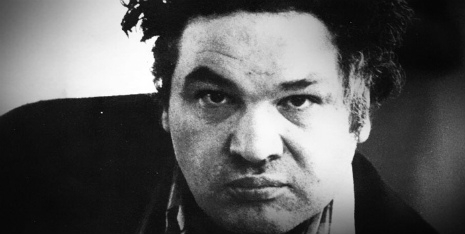
J. G. Ballard once said, if by some terrible calamity all art from the 20th century was destroyed except for the work of one artist, then it would be possible to recreate all of the century’s greatest artistic developments if that artist was Eduardo Paolozzi.
Deliberate hyperbole, but there is an essence of truth here, as Paolozzi produced such an incredible range and diversity of art that it has been difficult for critics and art historians to classify him. He began as a Surrealist, before becoming the first Pop Artist—a decade before Warhol put paint on canvas. He then moved on to print-making, design, sculpture and public art to international success.
Born in Edinburgh, to an Italian family in 1924, Paolozzi spent much of his childhood at his parent’s ice cream parlor, where he was surrounded by the packaging, wrapping and cigarette cards that later inspired his Pop Art. This early idyll of childhood was abruptly ended when Italy declared war on Britain in 1940. Paolozzi awoke one morning to find himself, along with his father and uncles, incarcerated, in the city’s Saughton Prison, as undesirables, or enemies of the state. Paolozzi was held for 3 months, but his father and uncles were deported to Canada on the ship HMS Arandora Star, which was torpedoed by a U-boat off the north-west coast of Ireland. The vessel sank with the loss of 630 lives.
Considered psychologically unsuitable for the army, the teenage Paolozzi studied at the Edinburgh School of Art, in 1943, before finishing at the Slade School in London, which he found disappointingly conservative in its approach to art.
After the war, Paolozzi moved briefly to Paris where he visited some of the century’s greatest artists, then resident in the city—Giacometti, Braque, Arp, Brâncuşi, and Léger. In his youthful boldness, Eduardo had telephoned each of these artists after discovering their numbers in the telephone directory. He was greeted as an equal, he later claimed, most probably because the war had just ended. The experience taught Paolozzi much, and emboldened his ideas. On his return to London, Paolozzi presented a slide show of adverts and packaging, which was the very first Pop Art.
Paolozzi developed his distinctive collages and multiple images of Marilyn Monroe long before Warhol and even Richard Hamilton, the artist with whom he showed at the now legendary This Is Tomorrow exhibition, at the Whitechapel Gallery in 1956.
Paolozzi eventually tired of his association with Pop Art, as it limited his incredibly diverse artistic vision. The same year as This Is Tomorrow, he played a deaf mute, with fellow artist Michael Andrews, in the first major Free Cinema movie Together by Lorenza Mazzetti.
By the late 1950s, he had moved on to industrial print-making, before producing an incredibly awe-inspiring range of designs for buildings, sculptures and public art—from his mosaic for Tottenham Court Road tube station to the cover of Paul McCartney’s Red Rose Speedway, through to such epic sculptures Newton, outside of the British Library, Vulcan, Edinburgh, and Head of Invention, Design Museum, London.
In 1984, Paolozzi conceived and produced a brief strange and surreal animation 1984: Music for Modern Americans, which was animated and directed by Emma Calder, Susan Young and Isabelle Perrichon, and based photocopies of Paolozzi’s original drawings.





